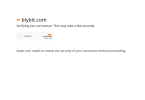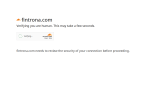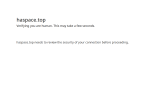If your Mac has been running slower than usual, it’s frustrating and inconvenient. Slow performance can be caused by a variety of factors, including outdated software, overcrowded storage, or even a malware infection. In this article, we’ll explore a common culprit behind slow Mac performance: ActiveMulti adware, and provide a step-by-step guide on how to remove it.
ActiveMulti is a type of adware that is designed to display advertisements on your Mac, often in the form of pop-up windows, banners, or notifications. While it may seem harmless, ActiveMulti can be a significant threat to your system’s security and performance. This type of adware can bundle itself with other software or freeware, which can lead to a range of problems, including:
* Increased system resource usage, which can slow down your Mac
* Installation of unwanted programs or browser extensions
* Excessive data collection and sharing
* Potential security vulnerabilities
To make matters worse, ActiveMulti is often difficult to detect and remove on its own, as it hides itself deep within your system. This is why it’s essential to take proactive steps to identify and eliminate ActiveMulti from your Mac.
So, how can you tell if your Mac is infected with ActiveMulti? Here are some common signs:
* Unexpected pop-up ads and unwanted notifications
* Slow performance, unresponsiveness, or frequent crashes
* Unnecessary toolbars, extensions, or software installed without your consent
* Increased data consumption or unusual bandwidth usage
If you’ve identified these traits on your Mac, it’s time to take action. Here’s a step-by-step guide on how to remove ActiveMulti adware from your Mac:
**Step 1: Disable Pop-Up Blocker**
Restrict ActiveMulti’s ability to display unwanted advertisements by disabling your browser’s pop-up blocker. This will prevent further installation of unwanted software or extensions.
**Step 2: Remove Unwanted Extensions**
Identify and remove any suspicious browser extensions or plugins by accessing your browser’s settings. Look for extensions with vague names or descriptions, as these are often indicative of adware.
**Step 3: Scan for Malware**
Use an anti-malware software like Malwarebytes or ClamXAV to scan your Mac for malware, including ActiveMulti. This may detect and remove the adware, as well as other threats.
**Step 4: Reset Browser Settings**
Reset your browser settings to their default settings to prevent any remaining ActiveMulti components from







